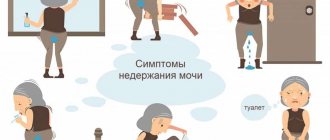The magic of butterflies in the stomach and the “ingredients” of orgasm
The body of each of us produces various substances: hormones and neurotransmitters (transmit impulses from one nerve cell to another). They work in close relationship with each other and are responsible for many processes, incl. for sexual desire and orgasm .
We will only talk about the main substances that play a leading role and determine our sexual behavior.
Testosterone is the fuel of love
It is a male sex hormone, but is synthesized in both sexes in the adrenal cortex, in men - in the testes, in women - in the ovaries. Its level in men is 5-10 times higher than in women, which, by the way, determines their increased interest in sex.
Testosterone is produced in response to touch and external information (for example, the appearance of a partner, the smell emanating from him). There is excitement and a feeling of anticipation of pleasure from the upcoming sexual contact.
Vasopressin - aggression and attachment
The hormone is synthesized in the hypothalamus, a small central region of the brain. Its level is higher in men. An increase in secretion leads to sexual arousal in men, while in women it leads to anger and anger, completely discouraging the desire to have sex. In long-term relationships, the hormone forms affection for each other among regular partners.
Estrogens - sensuality and femininity
They belong to female sex hormones, but are produced in both sexes. Their levels are significantly higher in women than in men.
The influence of estrogens on a woman’s libido is ambiguous and depends on the phase of the menstrual cycle, affecting excitability. For most representatives of the fair sex, sexual desire increases in the middle of the cycle - the egg ovulates and the likelihood of pregnancy is high. Nature came up with this trick to increase the chances of conception.
Sometimes an increase in desire is noted before or immediately after menstruation - due to the relationship between many hormones and the psychological characteristics of the woman.
With age, estrogen production gradually decreases, followed by menopause. It would seem that sexual activity should also decrease. However, in some women, on the contrary, it may increase for some time, which is associated with the production of testosterone by the adrenal glands in the same amount.
Serotonin - “happiness hormone” and “good mood hormone”
Is a neurotransmitter. Produced in the pineal gland (epiphysis), located in the brain.
Takes part in the regulation of memory, sleep, blood clotting and other processes. It is released, as a rule, during pleasant events and ecstasy. The feeling of satisfaction that occurs after orgasm is largely due to the release of serotonin in large quantities. Interestingly, increased levels of the substance delay the onset of ejaculation.
Oxytocin - affection and trust
The hormone is produced in the hypothalamus every day during interactions between people: a friendly touch, a handshake, stroking, hugging.
It takes part not only in the process of childbirth and the production of breast milk, but also influences the formation of attachment, sexual and social behavior. At the moment of pleasure or orgasm, the content increases significantly, and after a few minutes it drops to zero.
Effects of oxytocin on humans:
* reduces feelings of fear and anxiety, causes satisfaction, increases confidence;
* creates a romantic mood;
* helps strengthen the connection between people of the same group (in a team, with friends) and sexual partners;
* increases skin sensitivity, increasing the desire for physical contact;
* brings parents (especially mother) closer to the child.
On a note
The positive properties of the hormone appear upon contact with mentally close people and mutual sympathy. If a person interacts with strangers, his attitude towards them does not change either for the better or for the worse.
Dopamine - pleasure and motivation
Is a neurotransmitter. It is produced in the hypothalamus during positive experiences or thoughts/memories associated with them: eating delicious food, sexual intimacy, pleasant touches, achieving goals, etc. The synthesis of the substance begins during the anticipation of pleasure. Pleasant thoughts and fantasies provoke its release, increasing desire and creating a craving for repeated pleasure.
What happens in the brain during orgasm?
30Nov To the list of articles 227778
Category: Gynecology, Sexology, Urology
Although the reasons for having sex are many, varied and complex, the ultimate goal is to achieve orgasm. But because we are all so different, it is impossible to create a universal description of orgasm. The only thing that people have in common when describing what they experience during it is the incredibly pleasant sensations and experiences.
So what is it? If in doubt, you can consult a dictionary. The Oxford English Dictionary defines orgasm as “a sudden movement, spasm, or spasm caused by a surge of sexual excitement.” The Merriam-Webster dictionary is more descriptive, describing orgasm as “an explosive discharge of neuromuscular tension at the highest point of sexual arousal, usually accompanied by ejaculation of semen in men and vaginal contractions in women.” Renowned sex researcher Dr. Alfred Kinsey once said that "orgasm may be equated with a play, a climax, and a sudden silence achieved by an orchestra of human emotions, a kind of explosion of tension."
All definitions are basically correct. However, these are only a few definitions from numerous attempts to describe what an orgasm is.
Almost every aspect of orgasm - what is needed, what to achieve it, why it is so difficult and so rare for some to achieve it, and some do not even know what it is - has been and is the subject of numerous studies and discussions. What happens to the body during orgasm is fairly well known, and it is not surprising that the brain plays a critical role in achieving it. However, scientists have still not come to precise conclusions about what happens in the human brain during orgasm.
Orgasm and nerves
Without nerve impulses that are sent to the spinal cord and brain, orgasm would be impossible. Like any other part of the body, the genitals contain a large number of nerve endings that send information to the brain to inform it of the sensations being experienced. This helps explain why sensations are perceived differently depending on where a person is touched. A clitoral orgasm, for example, is different from a vaginal orgasm because they involve different groups of nerves.
All genitals contain a huge number of nerve endings (the clitoris alone contains more than 8,000), which in turn are connected to large nerves that run throughout the body to the spinal cord. They perform many other functions in the body besides providing innervation (supplying organs and tissues with nerves), so during sexual stimulation they facilitate feedback to the brain. Below are some types of nerves and their corresponding genital areas:
• Hypogastric nerve – connected to the uterus and cervix in women and to the prostate gland in men;
• Pelvic nerve – connected to the vagina and cervix in women and to the rectum in both sexes;
• Pudendal nerve – connected to the female clitoris and to the scrotum and penis of the man;
• Vagus nerve – connected to the uterus, cervix and vagina.
The role of the vagus nerve in orgasm is a relatively new discovery, so much remains unknown, and until recently scientists did not even know that this nerve passes through the pelvic area.
Since most of these nerves are connected to the spinal cord, it stands to reason that a person whose spinal cord is not functioning properly will not be able to achieve orgasm. This is exactly what people with spinal cord injuries talk about, and they emphasize that there is no orgasm for a very long period of time.
However, recent research shows that people with spinal cord injuries can still achieve orgasm. Dr. Barry Komisaruk and Dr. Beverly Whipple from Rutgers University analyzed the condition of women with spinal cord injury.
They found that these women could feel stimulation in their uterus and even achieve orgasm, although the brain was not receiving any signals from the hypogastric or pelvic nerve. How is this possible?
Magnetic resonance imaging of these women's brains showed that the area of the brain that receives signals from the vagus nerve was active. Because the vagus nerve bypasses the spinal cord, women are still able to feel genital stimulation.
Thus, during sexual stimulation and orgasm, different parts of the brain receive all the information that allows it to understand exactly what is happening and that what is happening is very pleasant. But until recently, experts had no way to know what was happening in the brain at that very moment of orgasm.
Brain pleasure center
You may have heard that our brain has a pleasure center that lets us know that something very pleasant is happening, and our desire increases and we want to do those actions again and again. This center includes "working" with all types of pleasure, from laughter and sex to drugs. Some of the areas of the brain involved in pleasure include:
1. Amygdala – regulates emotions
2. Nucleus accumbens – controls the release of dopamine
3. Ventral tegmental area – releases dopamine
4. Cerebellum – controls muscle function
5. Pituitary gland - produces beta-endorphins, which reduce pain, oxytocin, which increases feelings of trust, and vasopressin, which increases emotional intimacy.
Although scientists have been studying the pleasure center for a long time, there hasn't been much research into its connection to sexual satisfaction, especially in women. In the late 1990s and mid-2000s, a group of scientists from the University of Groningen in the Netherlands conducted a series of studies of men and women to determine brain activity during sexual stimulation. The team used scans of different areas of the brain that turn on and off during sexual activity. Participants' brains were scanned while they were resting, during sexual stimulation, and during orgasm.
Interestingly, they were able to reveal that when it comes to sex, there are not many differences between the male and female brains. In both, a part of the brain located in the area of the left eye, called the lateral orbitofrontal cortex, "switches off" during orgasm. “This is the area responsible for the mind and behavioral control, but when you have an orgasm, it stops working for a few moments,” says Janniko Georgiadis. Dr. Gert Holstege noted that the brain during orgasm looks the same as the brain of a person taking heroin.
However, there are still some differences between the male and female brains. When a woman has sex, the periaqueductal gray matter in her brain is activated. This substance controls the adrenaline response. The woman's brain also showed decreased activity in the amygdala and hippocampus, which are responsible for feelings of fear and anxiety. The research team hypothesized that these differences exist because it is more important for women to feel safe and relaxed in order to enjoy sex. In addition, the area of the cortex associated with pain was also active in women, which in turn shows that there is a clear connection between pain and pleasure.
Research has also shown that while women may fool their partners about whether or not they have an orgasm, their brains show the truth. When asked about faking an orgasm, brain activity in the cerebellum and other areas related to motor control increased sharply. However, brain scans during actual orgasm showed no activity in these areas.
Source: www.curiosity.discovery.com
Translation: Balandina E. A.
Share
Tweet
The brain is the “conductor” of sexual desire and orgasm
The functions of our body, including sexuality and sexual behavior, are controlled by the brain. How does this happen?
Various scientists independently conducted the research: Professor Barry Komisaruk (USA), Geert Holstege and Yanniko Georgiadis (Holland). MRI images of the brain were taken during arousal and orgasm - the subjects were placed in a tomograph.
American Research
It was focused only on female self-satisfaction.
* When masturbating and imagining touching the clitoris, about 30 parts of the brain are activated, responsible for satisfaction/reward and joy, emotions and touch, memory.
* Two minutes before the climax, the centers that awaken during eating and drinking “enter the battle.”
* At the moment of orgasm, the hypothalamus is activated, which is responsible for temperature, hunger, thirst, and fatigue. It is in the hypothalamus that oxytocin, dopamine and vasopressin are produced.
* During orgasm, part of the cerebral cortex is activated - the anterior part of the frontal lobes (prefrontal cortex). The area is responsible for decision making and self-esteem, controls desire and imagination (fantasies).
Dutch study
The experiments were carried out on couples: a man and a woman had sex. The activity of almost the same areas of the brain has been proven, but there is a fundamental difference .
The Dutch determined that at the moment of orgasm, a woman’s prefrontal cortex turns off, so she loses control over herself and enters a kind of trance (altered state).
Chaotic activity persists only in the cerebellum (coordinates movements) and the area responsible for sensory perception. This is what explains the moans, screams and incoherent words, as well as the woman’s lack of coordination of movements (she may scratch, bite and twitch).
Having surveyed sexually mature women, sexologists came to the conclusion that they are satisfied with only every third or even fourth intimacy. In other cases, women praise their partners out of inertia.
What about the partners? Some of them consider themselves a sex machine until retirement, while others, knowing about such deceit, simply do not trust their companions. Having analyzed the relationship between the sexes, scientists defended a couple of dissertations, and their students went further and found out the main thing - what are the true signs of orgasm in a woman?
This is the question that worries half of men and two-thirds of the fair sex. Why are there so many women? But of course, they need to subtly hint to their partners that there is something to strive for.
The first thing you can pay attention to is your feet. If the fingers are bent, the woman is at the height of bliss. Then there is the so-called sex rash. She betrays a lot of people. In 75% of women, orgasm triggers a pink, measles-like rash that first covers the cheeks, neck and abdomen and then spreads to the breasts. Every third woman experiences sweat on her forehead, upper lip or armpit area. The lower back and thighs may become covered in sweat. Very typical... Just like sneezing. Due to stagnation of blood in the nose, some women may begin to sneeze. Strong emotions - laughter and tears - can be a sign of a particularly wonderful climax, which is why some women often cry after a particularly violent orgasm.
The above signs are noticeable mainly after sexual intercourse. In addition to them, changes in the genital organs can be observed during orgasm. For example, the clitoris lengthens and thickens, reaching its maximum size. And just before the onset of orgasm, it is hidden under the foreskin. The vagina enlarges, its inner surface expands and lengthens. The vaginal walls become purple and become moist. As for the labia majora, they open and become flat, and the labia minora thicken and “pull up” forward.
Now a few words about what is not visible. So, the uterus almost doubles in size, and its cervix is pulled up.
There are also general “indicators”. The pulse, normally 60-80 beats, increases during orgasm to 100-150 beats per minute. Breathing becomes fast and shallow, its frequency increases 3 times. In addition, the partner feels strong tension in the pelvic organs, abdominal cavity, lower back, and hips. If at least some of these signs are present, the man can mentally congratulate himself, and the woman can bloom. At least, sexologists claim that before defending their dissertation on this topic, they experimented a lot, so there should be no mistakes.
Gleb SIVEROV
Subscribe to news
Male and female behavior after sex
According to surveys, only 46% of women after orgasm feel tired and want to sleep, but 94% of men feel the desire to fall asleep. These are the statistics, but in practice a lot depends on the quality of sex and hormone levels.
Hormonal component
1. The level of dopamine in a man increases during orgasm, signaling the brain about the pleasure received, on which he can become dependent - the body will demand more and more... However, soon after orgasm, the level of dopamine drops sharply, and the content of serotonin (responsible for sleep), on the contrary, it increases. The same processes occur in a woman, but estrogens, as a rule, suppress the action of serotonin, so after sex a woman often strives for communication.
2. The level of oxytocin increases during orgasm in both sexes, but it acts in the opposite way.
A woman feels attracted to a partner and can fall in love with a man who gives pleasure - regardless of whether the intimacy was casual or with a suitable life partner. The better the sex, the stronger the feelings, and if the relationship does not develop, the woman becomes disappointed. Still, love is evil...
A man experiences affection and attraction to his partner, but not so pronounced, since he has a higher level of testosterone, which can suppress/reduce the effect of oxytocin and vasopressin.
Energy component
Glycogen is the main storage carbohydrate and form of glucose (energy) storage in muscles. During sex, a man is always more active - additional physical activity. After such a “gym”, glycogen from the muscles is consumed. A man gets tired and needs rest - drowsiness occurs or he “falls off” to sleep.
What about the woman? She also needs rest, but the hormones often take over, so she may feel energized and want to talk.
Confirmation from researchers
MRI images show that the processes occurring in the brain during orgasm are similar in men and women. However, after orgasm, a man enters a period of rest - an inability to be aroused for some time. A woman can get several orgasms in a row.
So, a man’s sleep after orgasm is a physiological need, not indifference. How should a woman behave? Treat it without negativity, with understanding, you can touch your partner and stroke it gently - this stimulates the production of oxytocin.
Loving at any age is useful!
The older we get, the more brain cells we die - for example, at the age of 35 - about 7,000 cells per day!
Sex comes to the rescue! Regular intimacy helps brain cells grow and stimulates the part of the brain responsible for memory - proven by scientists from Princeton University (USA).
Kiss for good health!
There are more nerve endings on the lips than on the fingertips. Therefore, kissing relaxes us, makes us more sensitive, improves our mood and predisposes us to intimacy.
Alas, over the years, what was at the beginning of the relationship between partners is eaten away by everyday life. What to do? “Arm yourself” with knowledge about the processes occurring in the body and prepare a “love potion” according to your own recipe.
Spend more time together, add new sensations to your relationship, touch each other more often. Remember that love does not always go away, but simply moves to another level. Follow her...











